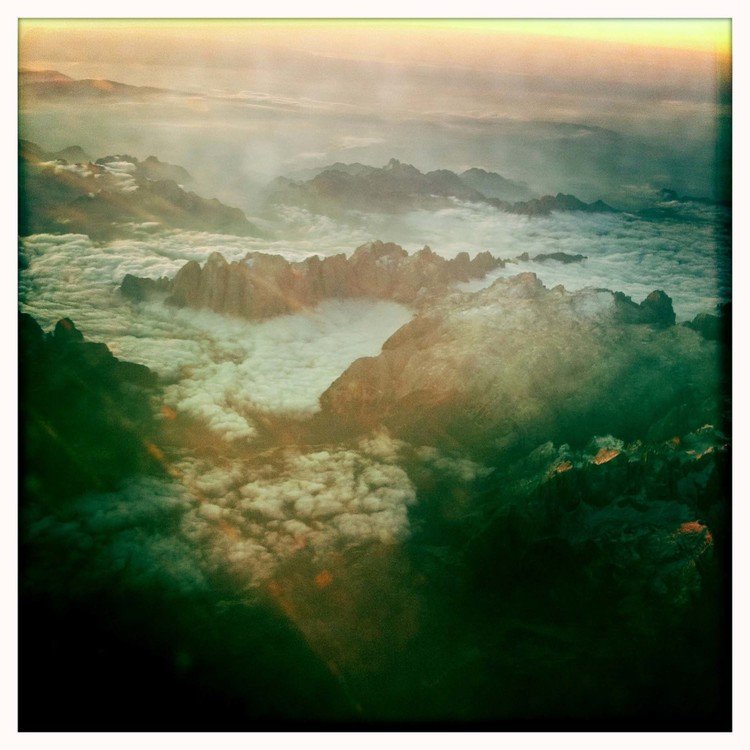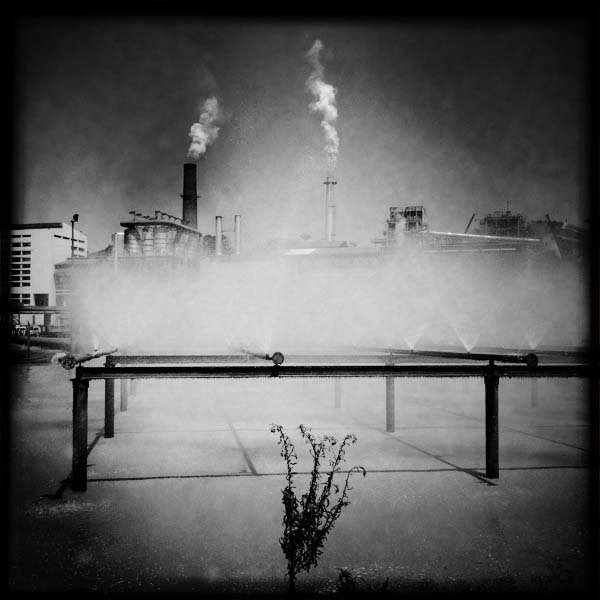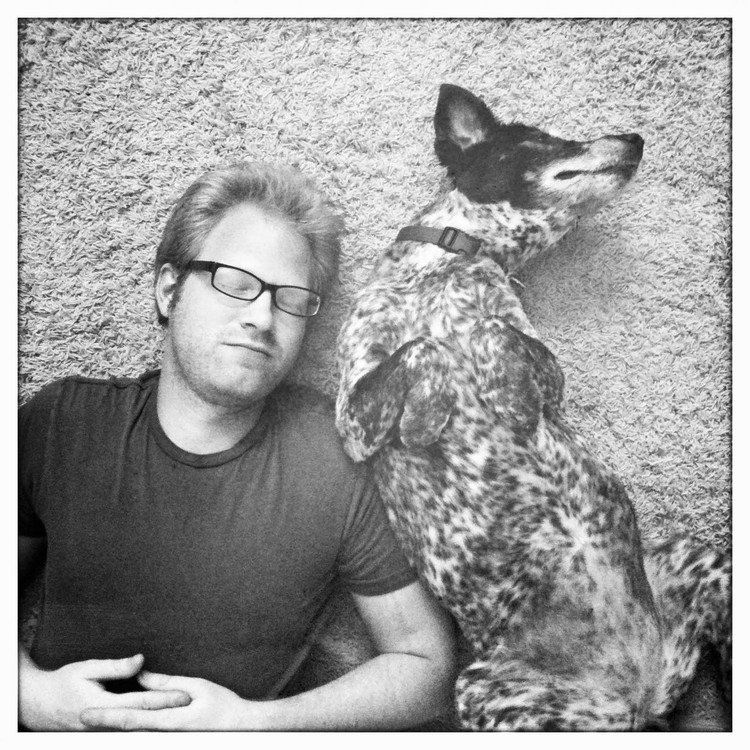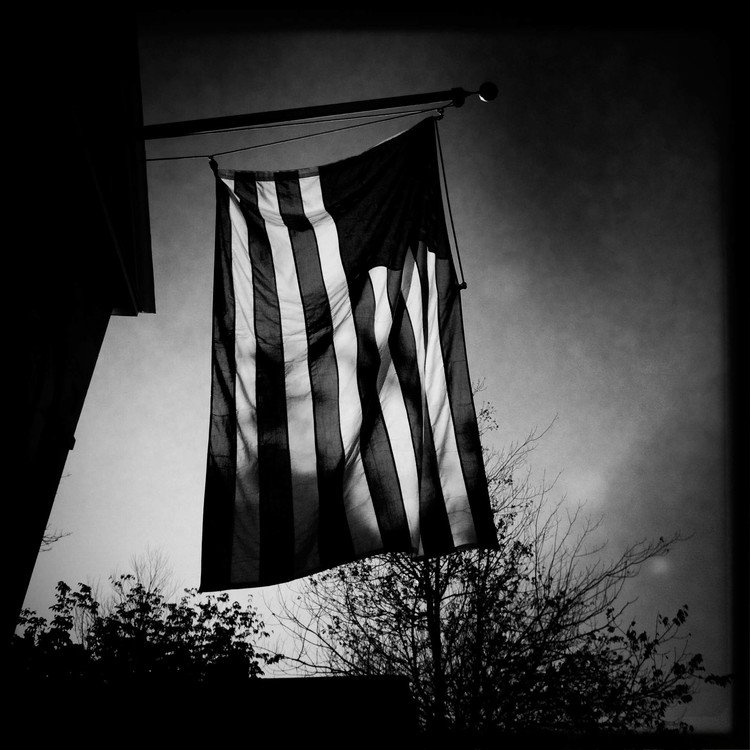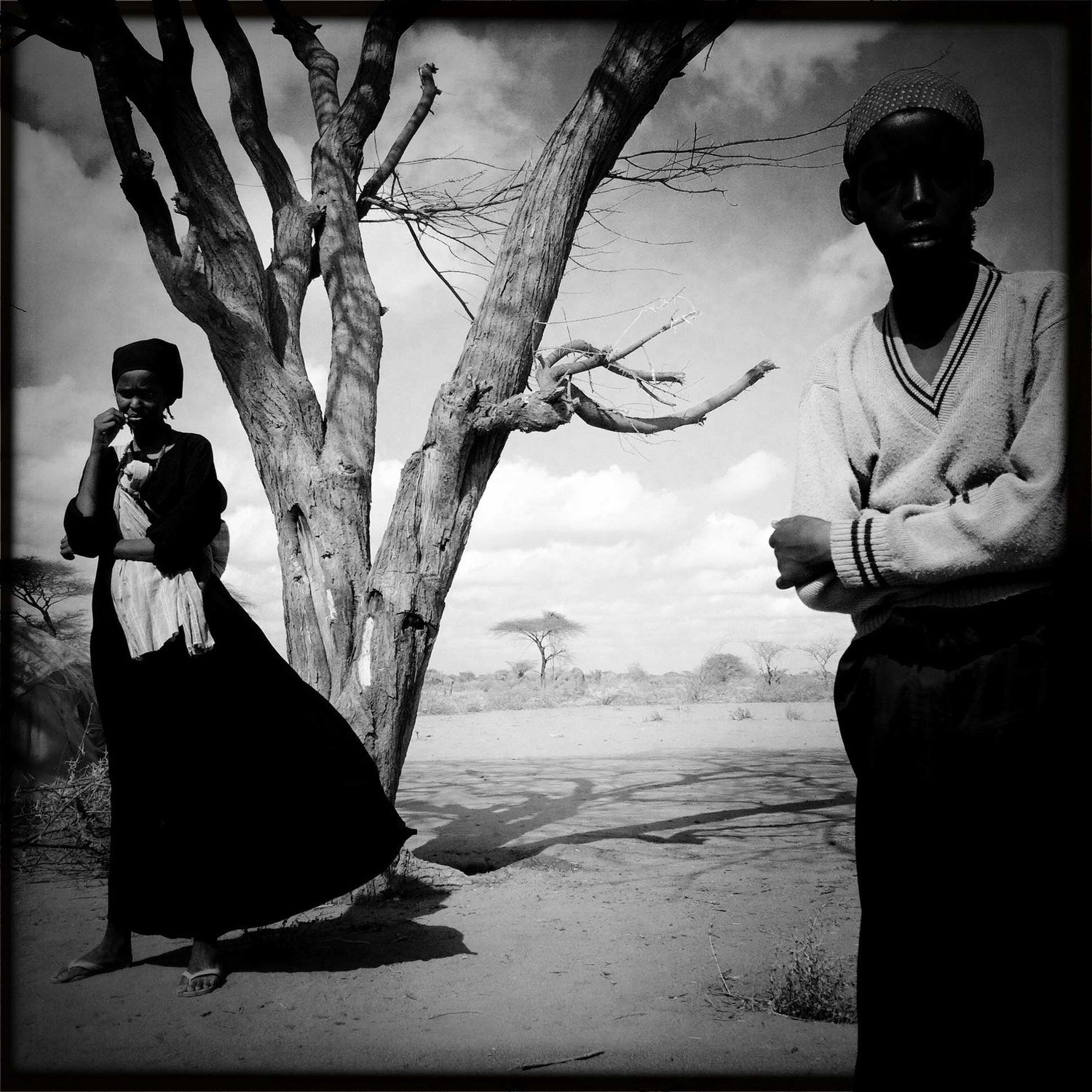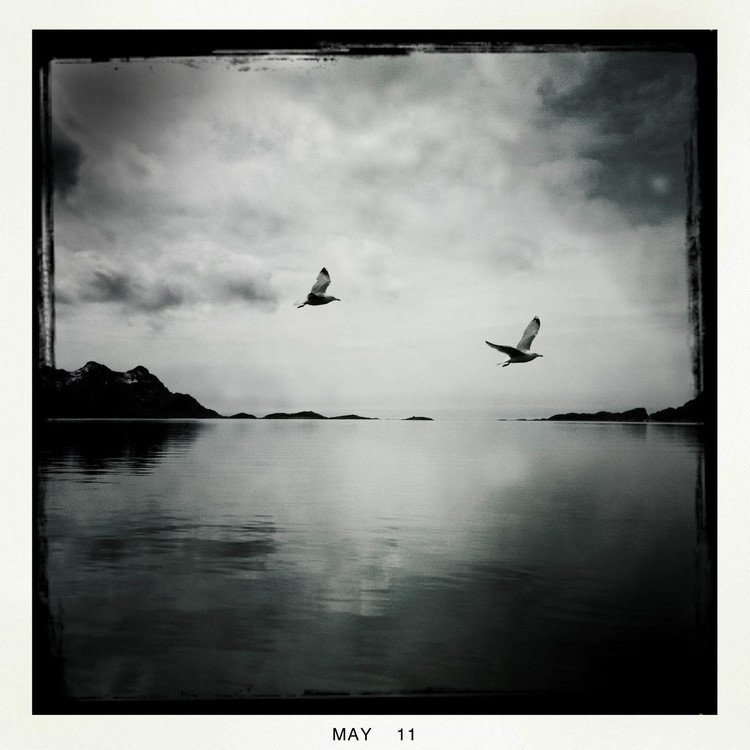iSee
Griffin/DSI Gallery • Boston, MA • March 2011
Nineteen international photojournalists bear witness to the impact of the smart phone as camera
VII Photo Agency is an international collective of highly-awarded photojournalists known for their coverage of conflict and social issues worldwide. Using the Hipstamatic application these noted photographers were captivated by the lack of interface with the people and landscape of their travels. A playful competition of their candid portraits and experimental smartphone image-making turned into an idea for an exhibit. I tracked the featured 19 photographers on assignments from the Baltic Sea to the Horn of Africa. Reviewed by the photojournalism site, Poynter, the exhibit started discussion on the impact of smartphone photography in traditional practices of journalism and art.
It provided impetus for Peter Di Campo’s hugely successful Everyday Africa campaign. Stephan Meyes moderated gallery talks in Boston and at the VII Gallery in Brooklyn. The show also traveled to Mexico City.
Press
Venetia Dearden published, Eight Days, her fourth book, chronicling a road trip of the U.S. in November 2011. Somerset Stoires, Fivepenny Dreams and Glastonbury, Another Stage document her native England. To celebrate the British fashion brand Mulberry’s 40th anniversary she created a bespoke coffee table book. Currently she works in moving image, directing fashion and music videos. Witness here her emotive and spontaneous travel images.
British-based photographer, Seamus Murphy, has documented Afghanistan since 1994 in his book, A Darkness Visible: Afghanistan. His coverage includes the Middle East, Africa, Asia, and most recently, the U.S. From Mogadishu, Ethiopia, Syria, and Tibet to the drug wars of Mexico, Murphy bears witness. His first feature film, Paradise Now, was shot on the West Bank of Nablus and told of two friends becoming suicide bombers. The images here follow Murphy in closer to home in London and New York.
VII Mentor, Peter DiCampo, began his work in Ghana with the Peace Corps. He currently lives in the U.K. and covers Africa and the Americas. Life without Lights, his current project, explores social and economic implications of global energy poverty. It has traveled to Nigeria, New York, London and Vienna. In response to the selected images for this show his fiance stated, “These are the first photos I’ve seen that tell the story of your life.” He agreed; his smart phone allows him “ to return to photography’s original and vital purposes: self-exploration and remembrance.”
British photojournalist, Gary Knight, is presently Director of the Program for Narrative and Documentary Practice for the Institute of Global Leadership at Tufts University. Beginning in Sarajevo 20 years ago he has documented conflict in Congo, Kosovo, Zaire and several tours embedded in the frontline of Iraq. Investigating poverty and malaria in Africa and Asia, his latest project is Topographia Immigracion on the U.S. border. Images here reflect his present family life on the New England coast.
Polish-born and Warsaw-based photographer, Maciek Nabradalik, is a recent member of VII covering assignments in the U.S. and Asia. With experience ranging from a newspaper staff photographer to covering fashion editorials for international magazines his present focus is on the sociological changes of Eastern Europe. Belying their true content three of his images were shot in Chernobyl and appear playful.
Based in New York City, Christopher Morris has covered war in Panama, Iraq, the Persian Gulf, Afghanistan, Chechnya, Somalia, Yugoslavia and the drug wars of Columbia. He documented five years of the Presidency of George W. Bush for Time Magazine. Included here are fleeting moments captured in Istanbul, MIlan and Paris.
Canadian, Donald Weber, trained and worked as an architect in the Netherlands prior to becoming a freelance photojournalist for international press in Africa, Russia, Eastern Europe and South America. He has turned his focus to study the dynamics of power and the interplay between violators and victims. His current project, City of Cities, explores the impact of technological inundation. His latest book ,Interrogations, looks at post-Soviet authority in Ukraine and Russia. He considers his phone, “his office”, and now after experimenting on a flight finds it is a way to play and “whittle time - from a window seat.”
Italian-based photographer, Stefano De Luigi, spent 8 years in Paris before settling in Milan. With two published book based on personal and sociological projects he has received awards including Days Japan International Photojournalism, POYi Best Book and several from World Press Photo. His work has been published in Stern, Paris Match, Le Monde Magazine, Time, and The New Yorker. Our show features work from New York City and Sicily.
American, Ron Haviv, covered the siege in Sarajevo, along with Gary Knight. HIs work documents humanitarian crises worldwide for over 20 years. Blood and Honey: A Balkan War Journal, Afghanistan: On the Road to Kabul, and Haitiare critically acclaimed collections of his work. Museums and galleries featuring his work include The Louvre, The United Nations and The Council on Foreign Relations. He notes “ the use of a tool familiar to the subject allows the photographer to reach a different level ofimmediacy and intimacy.”
A VII Mentor since 2010, Giovanni Cocco, is a self-taught Italian photographer who focuses on anthropological studies. A project in the Balkans commemorated the 10th anniversary of the end of conflict in Sarajevo. Another study of Islam in Italy, Islam Denied, was exhibited in Rome. Burladies, a portrait study of women in the Burlesque world, has exhibited in Italy and been published in international magazines. Cocco finds Hipstamatic“poetic and funny. Each image is unique and you have the freedom to shot anything.”
Filmmaker, educator, and photojournalist, Ed Kashi, is an innovative pioneer of multimedia expression including six published books. His complex and compelling rendering of the human condition have been exhibited worldwide. Capturing images on a smart phone allowed him an “exhilarating sense of freedom and spontaneity to sense and react to images in my daily environment.” Hipstamatic lends “a retro feel that is both fresh and vibrant. The evolution of photography always mirrors the development of technology.”
Born and based in Texas, VII mentor, Erin Trieb, began her photojournalism career in Israel and documented the Middle East, Africa and Afghanistan. An editorial and documentary photographer her work spans diverse subjects. Nominated for a Joop Swart Masterclass and PDN’s 30 Emerging Photographers she is published in Forbes, The New York Times, London Times, Wall Street Journal, Der Spiegel and Smithsonian.
Her current work as a result of being embedded in Afghanistan is a long term documentary project on the social effects of PTSD on U.S. military returning from Iraq and Afghanistan. She is founder and Director of The Homecoming Project.(www.thehomecomingproject.org)
Paris-based photographer, Tomas Van Houtryve, was a philosophy student in Nepal before turning to photography. An award winning photojournalist he was the first AP photographer to document Guantanamo Bay prison in Cuba. For Time he complied a feature, Rare Pictures from Inside North Korea. HIs latest project is following the Maoist rebellion in Nepal. His selection here takes us on jaunts from Paris to Siberia. He is the father of a newborn.
American, John Stanmeyer, spent a majority of his career in Hong Kong as a photographer for Time magazine covering conflict in Uganda and Sudan, the fall of communism in Eastern Europe, the tsunami in Southeast Asia, the spread of AIDS/HIV throughout Asia and the social tragedies of Haiti over a decade. His extensive documentation has received numerous accolades including the Robert Capa Award, Magazine Photographer of the Year and World Press Awards. His second book, Island of the Spirits, explores Balinese culture. The vignettes included in this show were possible to capture due to the immediacy of this tool. He now resides in the Berkshires with his family.
Kidnapped in Fallujah in 2004, embedded on the frontline of Afghanistan, and detained in Libya in 2010, London-based photojournalist, Lynsey Addario, documents conflict and women right’s abuse in India, Darfur, Congo, Somalia, Bahrain, Kenya, and Sierra Leone. The images included from August 2011 are her first experiments with Hipstamatic while on assignment for Newsweek covering the drought in the Horn of Africa. In 2009 she received both a MacArthur Fellowship and shared a Pulitzer for International Reporting with her New York Times team.
Italian-born photojournalist, Davide Monteleone, divides his time between Italy and Russia, having lived in both countries and the U.K. Leaving behind his engineering education he discovered a love of photography and journalism while in the U.S. He published his third book, Red Thistle, in 2011, preceded by Dusha, Russian Soul in 2007 and La Linea Inesistente in 2009. Here his eclectic images are enhanced by the serendipity of Hipstamatic.
MIkolaj Nowacki, completed a law degree and began a PhD in Space Law before pursuing his passion for photography. Born and educated in Poland he entered the VII Mentor Program in November 2011 working with Antonin Kratochvil. Presently he is a freelance and contributing photojournalist to National Geographic Poland and NatGeo Traveler Poland. Intimate moments are captured in his personal portrait series, enhanced only in Photoshop. The use of a smart phone allows him to be “loose and creative.”
Oslo-based photojournalist, Marcus Bleasdale, documents human rights as a means to influence global policy makers. His work, including “The Rape of a Nation” has been exhibited in the U. S. Senate, The United Nations, The Nobel Peace Centre Oslo, the French Ministry of Foreign Affairs and the House of Parliament in the U.K. Recognized with numerous international awards throughout Europe and Japan, he received The Photo Book of the Year POYi (2010). HIs landscapes featured here capture the fjords of Norway, his antidote after time spent in the Congo.
Danish photographer, Joachim Ladefoged, picked up a camera following a childhood illness. His first book, Albanians , was published in 2000. Mirrors, a book and short movie on bodybuilders followed in 2008. Editorial clients include The New York Times Magazine, The New Yorker, National Geographic, MARE, Newsweek, The Sunday Times magazine and TIME. HIs work is represented in the collection of the Danish Royal Library. Working with a smart phone he finds allows for “casual and fun shooting.”

